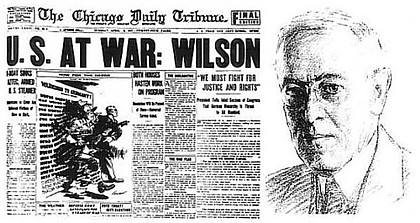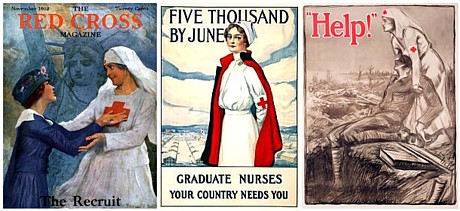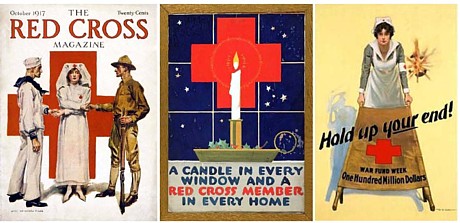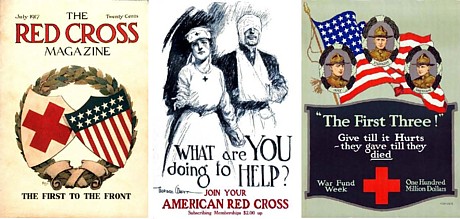
In the early years of World War I, there was a great need for medical support for wounded Allied soldiers. Although America was not yet directly involved in the conflict, American Red Cross nurses volunteered to go overseas to treat wounded soldiers and provide person-to-person proof of America‘s willingness to support its allies.

When the United States declared war against Germany on April 6, 1917, our country maintained only a small army with a limited medical corps. With the passage of the Selective Service Act in 1917, 2.8 million men entered military service, and a million of them were in France by the summer of 1918. Clearly, the military would need much more medical assistance to treat its wounded.
President Woodrow Wilson, as honorary chairman of the American Red Cross, urged Americans to give their voluntary support to meet the needs of the thousands of young men joining the Allied forces on the battlefields of Europe. (Shown above are works by Jack Manley, Gordon Grant and Kidder.)

To recruit nurses, many talented American artists illustrated posters with images of young heroines. These depictions were hardly historically accurate since American Red Cross nurses did not wear veils or diaphanous white gowns for battleground duty. But these romanticized – almost angelic – visions of women appealed to nurses’ patriotism and sense of compassion for soldiers on the front line. (Shown above are works by Paul Meylan, Carl Rakeman and Tom Mills.)
During the latter part of World War I, many medical services for military personnel were provided by the American Red Cross and the 23,800 nurses who volunteered for service. Treating soldiers injured by trench and gas warfare was a new challenge for these heroic women.

In addition to being a nurse recruitment tool, many of these posters and magazine covers helped raise funds for the Red Cross in its work to comfort the wounded and perform other services for civilians caught in the war zones. (Shown above are works by James Montgomery Flagg, L. N. Britton and W. B. King.)
Find more information on the American Red Cross in World War I on redcross.org.


